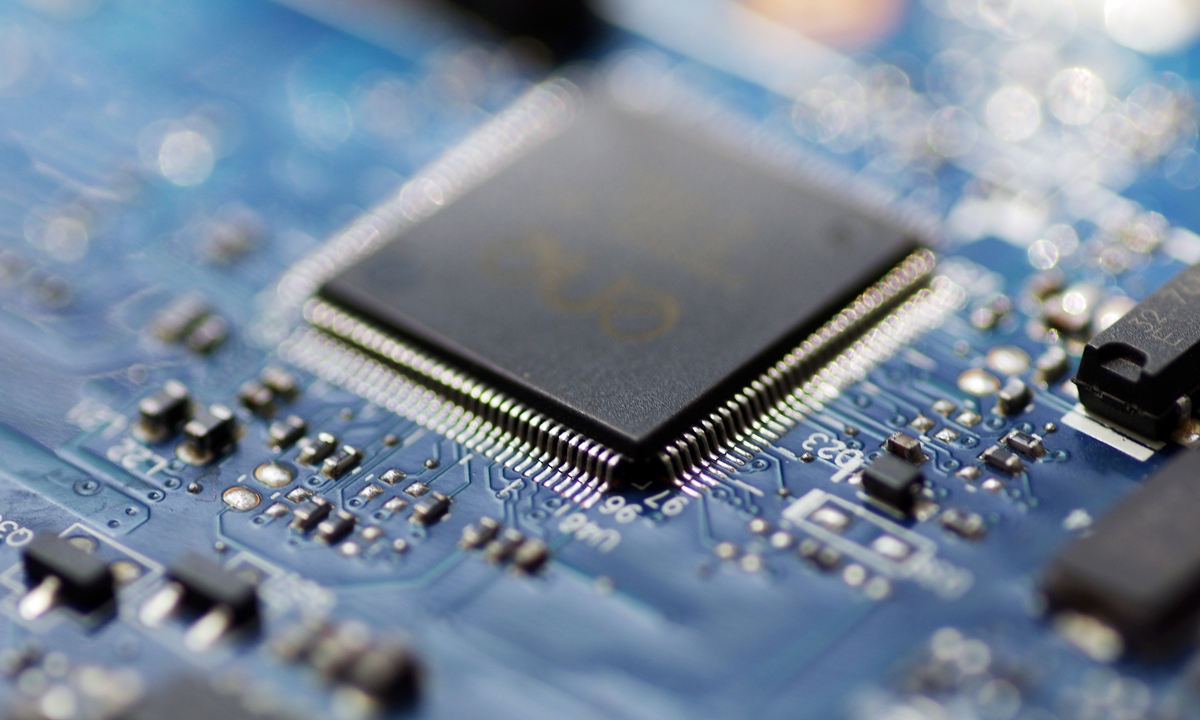Trump’s high-tech ‘iron curtain’ helps no one
By Ma Jihua Source: Global Times Published: 2020/9/7 18:33:40

chip Photo:VCG
Squarely aimed at slowing the speed of China's development, the US has started to issue indiscriminate attacks on Chinese technology firms: leading Chinese chipmaker Semiconductor Manufacturing International Corporation (SMIC) is the latest to be thrown into the spotlight.
According to Reuters, SMIC's "relationship to the Chinese military is under scrutiny," and it could be added to a US trade blacklist. Later on Saturday, SMIC issued a statement clarifying that it has "no relationship with the Chinese military" and its products are "solely for civilian and commercial end-users and end-uses".
Though the US authority has not yet taken any concrete action, SMIC, as a leading chipmaker in the Chinese mainland, may not be able to shun the US' bullying. It was only a matter of time before the Trump administration included it on a trade blacklist with the usual excuse of the company being a "national security threat"- the catch-all reason for attacking more and more Chinese tech companies.
It is inevitable that SMIC will be impacted if the sanctions come into effect, however, as a chip foundry, its current production capacity won't be affected. Meanwhile, the US is not the only supplier of raw materials for SMIC. Both Japan and South Korea are competitors who will be happy to take over the market. In the end it will be the upstream suppliers in the US who will bear the brunt.
It is no secret that Washington is hoping to exclude Chinese mainland-based technology firms from the semiconductor industrial chain. Alongside its crackdown on firms from the Chinese mainland, the US has also been cajoling or threatening companies based in the island of Taiwan, such as TSMC. However, TSMC is not in a position to pick sides and cannot afford to lose the Chinese mainland market, which is home to the majority of its downstream customers.
As China-US tensions intensify, China has been ramping up efforts to shore up its semiconductor-related technologies. Closing the technological gap and developing an independent series of technologies may take three to five years, and may generate higher costs and lower yield. But with the technology in hand, China's huge market will gradually eliminate the cost disadvantages of new Chinese technologies.
Now, with COVID-19 under control, China has become the only major economy to demonstrate an efficient and quick recovery. China's foreign trade reached 2.88 trillion yuan ($421.69 billion) in August, up more than 6 percent year-on-year, according to data from the General Administration of Customs. No firm globally would be willing to ignore such a market.
Decades of globalization has facilitated the development and popularization of new technologies. People across the world have been given access to new tech products at lower prices, and firms have been able to explore wider markets overseas. With a Trump-led US pulling down a "technology iron curtain", firms everywhere will have to strengthen their independent research and development capacities, leaving the world with multiple sets of parallel technologies and much-slowed development.
The author is a veteran analyst of technology industries. bizopinion@globaltimes.com.cn
Posted in: EXPERT ASSESSMENT